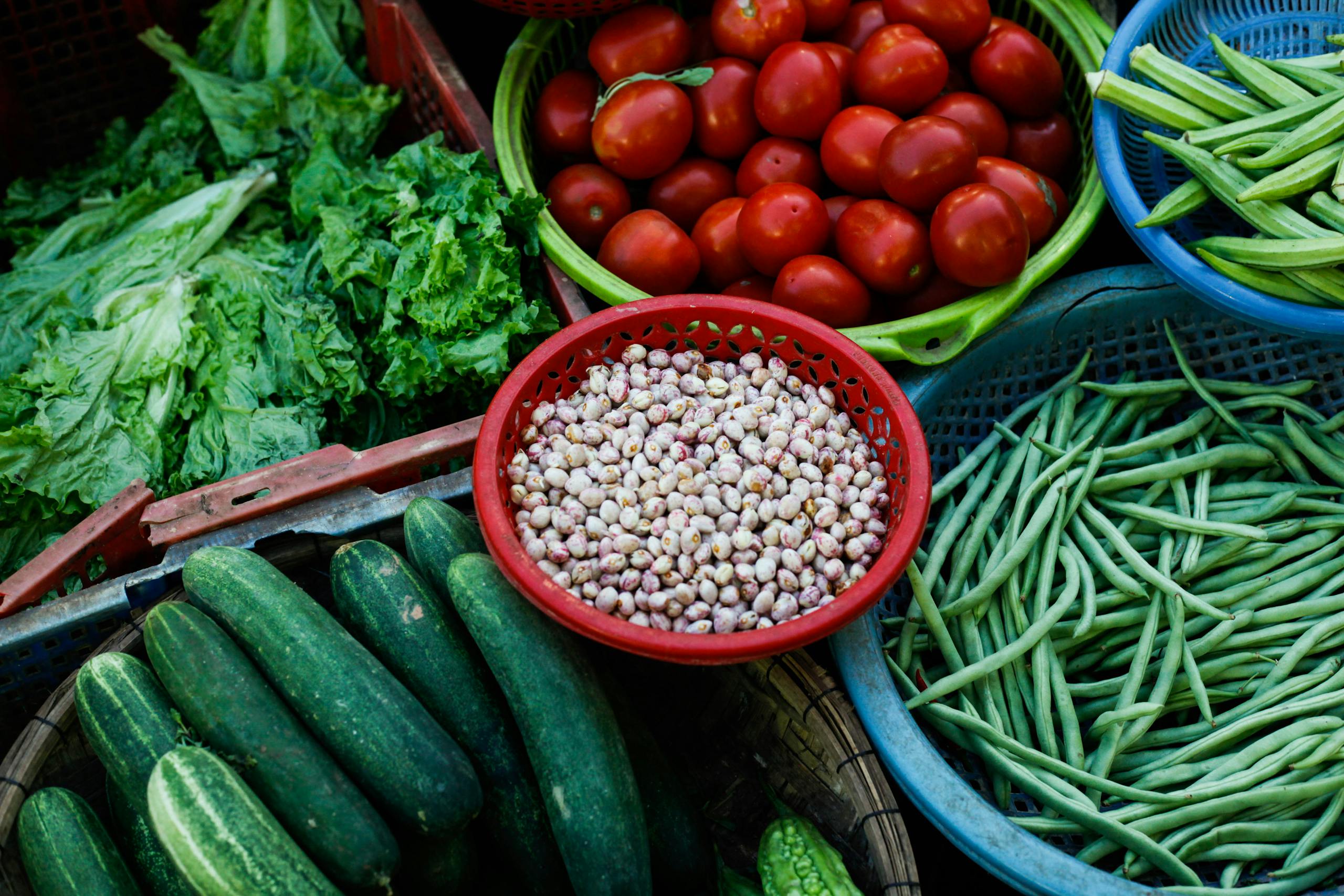The meal on your plate has traveled over 1,500 miles to get to you. That long journey impacts your daily food’s nutritional value, freshness, and quality. Understanding how healthy food distribution works can help you make better choices that support your health goals.
Besides personal health, healthy food distribution plays a significant role in addressing food insecurity and hunger in communities so that more people can access nutritious meals.
From farm to table involves complex supply chains, storage methods, and transportation systems that either preserve or destroy the nutrients in your food. Understanding these processes allows you to identify foods with better nutritional profiles and make choices that energize your life.
This food distribution exploration will show you how to recognize well-distributed foods, connect with local sources, and incorporate seasonal eating into your routine. You’ll learn practical ways to upgrade every meal while supporting sustainable practices that benefit your health and the planet.
What is Healthy Food Distribution?
Healthy food distribution moves fresh, nutritious food from farms to consumers while maintaining quality and nutritional value. Unlike conventional distribution systems that prioritize cost and shelf life, health-focused distribution prioritizes preserving nutrients, reducing processing, and minimizing the time from harvest to consumption.
Healthy food distribution systems make nutritious food more convenient and affordable for consumers. The key factors that make distribution “healthy” are minimal processing steps, reduced travel time, proper storage conditions, and sustainable practices throughout the supply chain. These all work together to ensure that food is at its peak nutritional value.
Conventional distribution involves multiple handling points, extended storage periods, and long transportation routes. Food sits in warehouses for weeks or months before it reaches stores. Healthy distribution systems prioritize quick movement from farm to consumer, often within days of harvest.
The difference is evident when you compare a tomato from your local farmers’ market with a grocery store tomato. The local tomato was likely picked when ripe and got to you within 24-48 hours, with maximum nutrients and flavor. The grocery store tomato may have traveled across the country, been picked green, and artificially ripened during transport. Healthy distribution systems can get you more nutritious food and better health outcomes.
The Farm Connection: Where Your Food Begins
Local farms provide nutritious and fresh produce to your table. By providing fresh ingredients, local farms support the nutritional needs of families, children, adults, and seniors so everyone can have healthy food options. Here’s how their methods upgrade your food:
Healthy Farming Practices
- Soil health: Healthy soil rich in minerals and organic matter increases the nutrient content of fruits and vegetables. Regular testing and amendments keep this balance in check over time.
- Organic methods: Many local farms use organic practices and seasonal growing cycles for sustainability. These methods also reduce chemical pesticides and protect the environment.
- Crop rotation and natural fertilizers: These techniques maintain soil fertility and give plants what they need. By rotating crops, farmers prevent soil depletion and reduce the risk of pests and diseases.
- Cover cropping: Planting cover crops like clover or rye protects the soil from erosion and improves its structure. It also boosts water retention and biodiversity on the farm.
- Integrated pest management (IPM): Under IPM, farmers rely on natural predators, crop diversity, and minimal chemical use to manage pests. This means healthier crops and less environmental impact.
Nutritional Benefits of Local Fresh Produce
- Peak ripeness: Produce harvested at the right time has higher levels of vitamins, antioxidants, and beneficial compounds. That means you get the most nutrient-dense version of your fruits and vegetables.
- Shorter transport distances: Locally grown food retains nutrients often lost during long-distance transport and storage. Faster delivery means fewer preservatives are needed to keep the produce fresh.
- Minimal pesticide use: Many farms reduce or avoid pesticides, reducing your exposure to harmful chemicals. This also means healthier soil and cleaner water in your community.
- Supports local farmers: Buying local food supports small farms and the local economy. It also creates a stronger connection between consumers and those growing their food. Many families get fresh groceries from local farms through CSA programs or farmers’ markets, often every month, so they have consistent access to nutritious produce.
- Fresher taste: Food that travels less tastes fresher and more flavorful. You’ll notice a big difference in quality compared to store-bought produce from far away.
- Environmentally friendly: Reduced transportation means fewer greenhouse gas emissions and greener local food. Supporting local agriculture also preserves farmland and reduces urban sprawl.
- Seasonal variety: Eating local means eating fruits and vegetables at their peak. This means a natural rotation of foods throughout the year and a more diverse and exciting diet.
The Supply Chain Challenge: Freshness, Nutrition, and Food Insecurity
Traditional supply chains can significantly reduce nutritional value through long transport times and multiple handling points. Produce loses vitamins and minerals each day after harvest; some nutrients decline 10-50% within a week of picking.
Proper storage and transportation methods can preserve nutrients. Cold chain management keeps temperatures consistent from harvest to sale. Controlled atmosphere storage adjusts oxygen and carbon dioxide levels to slow ripening and nutrient loss. Quick distribution gets produce from farm to consumer in days, not weeks.
Food hubs connect local farms with consumers. These distribution centers aggregate produce from multiple small farms and deliver it to stores, restaurants, and consumers directly. They maintain proper storage conditions and reduce the time and distance food travels.
An extensive network of partners—food pantries, soup kitchens, food banks, and organizations like Feeding America—plays a crucial role in food distribution. Through strong partnerships and collaboration with partner food pantries and other community organizations, food distributions reach underserved neighborhoods and those most in need. Grants support these partners so they can expand their reach, improve their food pantry services, and strengthen the overall network.
Technology in food distribution includes GPS tracking systems that monitor shipment locations and conditions, temperature sensors that alert handlers to storage issues, and inventory management software that reduces the time products spend in storage. These innovations preserve the nutritional quality of food throughout the distribution process.
Sustainable Sourcing: Better for You and the Planet
Sustainable sourcing often means more nutrient-dense food and is better for the environment. Organic certification means crops are grown without synthetic pesticides and fertilizers, reducing chemical exposure and usually increasing beneficial compounds like antioxidants.
Fair trade supports farmers who can invest in better growing conditions and harvesting methods. Regenerative agriculture methods focus on rebuilding soil health, which creates more nutritious produce. These methods include cover cropping, rotational grazing, and composting.
To find sustainably sourced food, look for certifications like USDA Organic, Fair Trade Certified, or Rainforest Alliance. Seasonal eating guides help you choose produce at its peak in your region. Local options include farmers’ markets, community-supported agriculture (CSA) programs, and farm stands. Many city-based programs and initiatives focus on sustainable sourcing to support urban communities.
These sustainable practices benefit your health by providing more nutrient-dense food, fewer chemical residues, and better flavor profiles. They also support environmental health by reducing pesticide use, improving soil quality, and lowering carbon emissions from transportation.
Smart Choices: How to Find Well-Distributed Food
Shopping at farmers’ markets gives you direct access to locally distributed food. Ask farmers about their harvesting and distribution practices. Many vendors can tell you exactly when the produce was picked and how it was stored. Take this opportunity to learn more about local food systems and available nutrition education resources.
Joining a CSA program connects you directly with local farms and their distribution systems. CSA members typically get weekly boxes of seasonal produce harvested within days of delivery, ensuring maximum freshness and nutritional value.
When shopping at conventional stores, use this checklist to evaluate food quality:
- Check harvest or pack dates when available
- Look for seasonal produce grown in your region
- Look for fresh fruits and vegetables that are in season and locally sourced.
- Choose items with vibrant colors and firm textures
- Avoid produce with signs of extended storage, like wrinkled skin or soft spots
- Select frozen options for out-of-season items as they’re often frozen at peak ripeness
Research what’s in season in your area to plan meals around locally distributed, seasonal food. Spring might bring leafy greens and asparagus, summer offers tomatoes and berries, fall provides apples and squash, and winter features stored crops like root vegetables. Making smart food choices can help families make ends meet, and millions of people benefit from better food distribution systems and nutrition education programs.
Change Your Eating with Distribution Knowledge
Knowing healthy food distribution empowers you to make choices that impact your nutrition and overall well-being. Food with shorter distribution chains has more vitamins, minerals, beneficial compounds, and better flavor and freshness.
Start by incorporating one locally sourced or seasonal food into your weekly routine. Visit a nearby farmers’ market, join a CSA program, or find local farms that offer direct sales. These steps will gradually change your eating habits and support your health goals.
Online directories, community bulletin boards, and social media groups focused on local food are resources for finding local food sources. Many areas have food co-ops that prioritize locally distributed products and offer member benefits. Seasonal eating guides and meal planning tools help you match your food choices with distribution timing. Plan meals around what’s in season in your area to get the most nutritional benefit and support local food systems.
Post about your local food sourcing in community forums and social media groups. Your journey to better food distribution choices will inspire others and connect you with others who care about wellness and sustainability.
Medical Disclaimer:
This content is for informational purposes only and is not intended as medical advice, diagnosis, or treatment. Always consult with a qualified healthcare professional before making any changes to your diet, exercise, or health routine. Never disregard professional medical advice or delay seeking it because of something you have read on this site.







